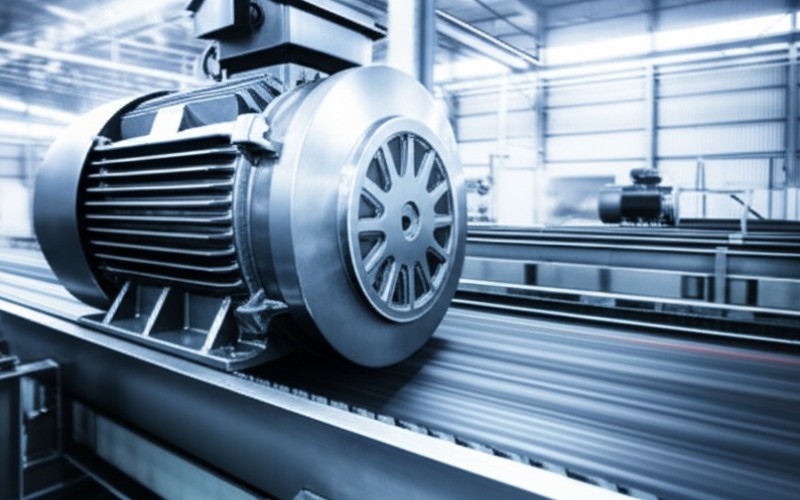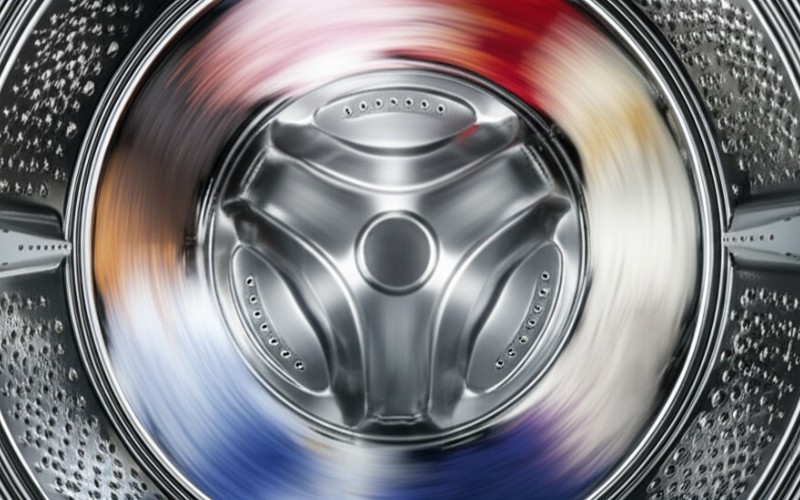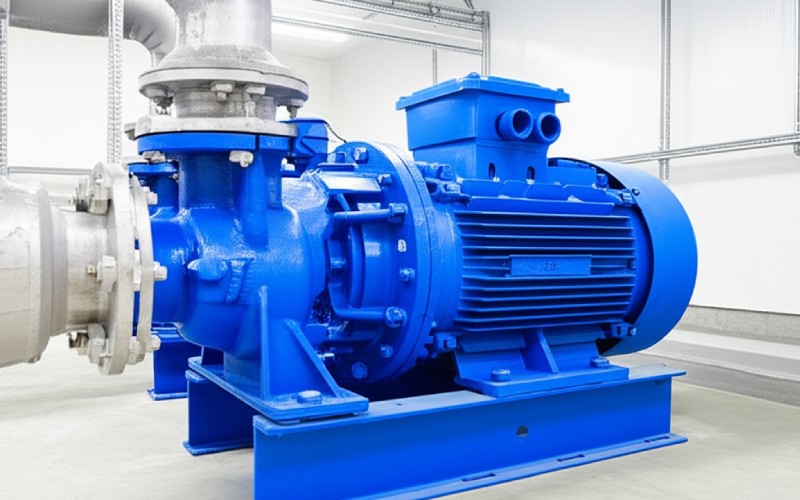Let Sino's Lamination Stacks Empower Your Project!
To speed up your project, you can label Lamination Stacks with details such as tolerance, material, surface finish, whether or not oxidized insulation is required, quantity, and more.

At the heart of many of the giant factory equipment is a powerful and reliable workhorse: the induction motor. This is a type of AC motor that is famous for being simple, tough, and cheap to build. It works using a clever trick of physics called electromagnetic induction. This article is for you if you’ve ever wondered how these motors work or what the different induction motor types are. You will learn the main types and see where they are used every day.
An induction motor is an electric motor that uses alternating current (AC) to run. Its main job is to convert electrical energy into mechanical energy, which means it turns electricity into motion. The brilliant inventor Nikola Tesla came up with the idea for this type of motor. It has two main parts: a stationary part called the stator and a rotating part called the rotor. There is no direct electrical connection between the stator and rotor.
The magic happens through a principle called electromagnetic induction. When you run an AC current through the windings of the stator, it creates a magnetic field that rotates. Think of it like a spinning magnet. This spinning field passes through the rotor and, in turn, will induce a current to flow within the rotor. This induced current creates its own magnetic field. The two magnetic fields push and pull on each other, which makes the rotor spin and creates mechanical energy. This is how an induction motor works without any brushes or physical contacts to the rotor.
When we talk about the types of induction, we usually split them into two big groups. The grouping depends on the type of AC power they use. The two main types are single-phase induction motors and three-phase induction motors.
The big difference is the power supply. A single-phase motor runs on a single-phase supply, which is the kind of power you have in your home. A three-phase induction motor needs a three-phase power supply, which is common in commercial and industrial settings. This difference in power supply changes how the induction motor is built and how it performs. Three-phase motors are generally more powerful and efficient.
Now, let’s look at the first type. Single-phase induction motors are everywhere. If you have a fan, a refrigerator, a washing machine, or a small pump at home, you likely have one of these. They are popular because they can run on standard household voltage. This makes them perfect for everyday appliances.
A basic single phase induction motor is not self-starting. This means if you just connect it to a single-phase AC supply, the rotor will just hum and vibrate but won’t spin. It doesn’t have enough starting torque, which is the twisting force needed to get it moving. To solve this, engineers have come up with clever ways to give the motor a “push” to get it started. An AC motor of this type always needs a special starting circuit.

So, why isn’t a single-phase motor self-starting? It’s because the magnetic field produced by its stator is not a rotating magnetic field. Instead, the stator field just pulses. It gets strong, then weak, then strong again, but it doesn’t spin around the stator. This pulsing field can keep a rotor spinning once it’s already moving, but it can’t get it started from a standstill.
To fix this, the motor needs a way to produce a rotating field, at least for a moment. This is done by adding a second winding to the stator, called a start winding. The main winding provides the running power. The start winding is used only to create a second magnetic field that is out of step with the first one. This difference is what creates a weak rotating field, giving the motor the initial torque it needs to start spinning.
Because they need help starting, there are a few types of single-phase motors. Each type uses a different method to create the starting torque. The most common induction motors include split-phase motors, capacitor-start motors, and shaded-pole motors.
Split-phase motors are simple and cheap. They use a start winding with different properties than the main one to create the phase shift. Once the motor gets up to speed, a switch disconnects the start winding. Capacitor-start motors are a step up. They use a capacitor in the start circuit. This capacitor creates a much better phase shift, which gives the motor a very high starting torque. They are great for machines like a compressor that need a lot of power to get going. Finally, shaded-pole motors are very simple and have low torque. They use a small copper ring on the stator to create the second field. You find these in small fans where high power isn’t needed.
Now we get to the big brother: the three-phase induction motor. These are the workhorses of industry. In my experience, when you need reliable and efficient power for big machines, this is the induction motor you use. They are used for everything from large pumps and conveyors to factory automation.
The secret to their power lies in the three-phase AC supply. This type of alternating current has three separate currents that are all perfectly timed. When you feed this power into the stator of a three-phase motor, something amazing happens. The windings are distributed in such a way that they naturally create a true rotating magnetic field. There’s no need for a capacitor or a start winding. This makes the three-phase induction motor self-starting, very efficient, and able to produce a smooth and constant torque. The stator’s field is strong and spins from the moment you apply power.
Even within the world of three-phase motors, there are two main designs for the rotor. These are the squirrel-cage rotor and the slip ring motor (also called a wound-rotor motor). The vast majority of induction motors are widely used with the squirrel-cage design because it’s so simple and rugged.
A squirrel-cage rotor is made of a cylinder of steel with heavy bars of copper or aluminum, called rotor bars, running through it. The bars are connected at the ends. It looks like a cage you’d see for a hamster or squirrel, which is where it gets its name. A slip-ring motor is different. Its rotor has actual wire windings, similar to the stator. These windings are connected to external resistors through a slip ring and brushes. This setup allows for control over the motor’s speed and torque, giving it a very high starting torque for special jobs. A polyphase induction motors design like this is less common but very useful for certain heavy loads. This ac polyphase design is complex.
Choosing the right induction motor comes down to the job it needs to do. For most home and light commercial uses, a single-phase motor is the right choice. Single-phase induction motors are used in appliances because they can run on standard household voltage. If you need to power a drill press, a small air compressor, or a water pump in a home, these motors are used.
For heavy-duty jobs in factories, you’ll almost always see a three-phase induction motor. Three-phase induction motors are used because they are more efficient, have a higher power factor, and can deliver much more power. The choice between a squirrel-cage and slip-ring model depends on the torque needed. For most applications with normal starting torque needs, the squirrel-cage induction machine is perfect. For something like a large crane that needs to start with a very heavy load, the slip-ring asynchronous motor is a better choice. The electrical connection for a three-phase motor is also more complex. This ac induction motor is a true industrial tool.

The poles in an induction motor refer to the magnetic poles created by the windings in the stator. They always come in pairs (2-pole, 4-pole, 6-pole, etc.). The number of poles is directly related to the motor’s speed. The speed of the magnetic field of the stator is called the synchronous speed.
Here is a simple rule: the more poles an induction motor has, the slower its synchronous speed. A 2-pole motor running on 60 Hz power will have a synchronous speed of 3600 revolutions per minute (RPM). A 4-pole motor on the same power will run at 1800 RPM. The actual speed of the rotor is always slightly less than the synchronous speed. This difference is called “slip,” and it’s what allows the motor to induce current in the rotor and produce torque. The field produced by the stator sets the top speed.
Finally, let’s touch on power factor. In simple terms, power factor is a measure of how efficiently an electric motor uses the electricity it draws. A perfect power factor is 1.0. Induction motors, especially when they are not running with a full load, can have a poor power factor. This means they draw more current than they actually use to do work.
For a homeowner, this isn’t a big deal. But in commercial and industrial applications with hundreds of motors, a low power factor can waste a lot of energy and increase electricity bills. Three-phase induction motors generally have a better power factor than single-phase motors. Modern technology, like variable frequency drives that use power electronics, can help control the motor’s speed and greatly improve its power factor, making this powerful induction motor even more efficient. The load torque on the motor has a big effect on its power factor.